Despite the evolution of technology and new trends in digital marketing, email marketing remains one of the most effective channels for engaging prospects, nurturing leads, and converting them into loyal customers.
According to Statista, email marketing revenue is growing worldwide and is expected to reach $17.9 billion by 2027, compared to $7.5 billion in 2020.
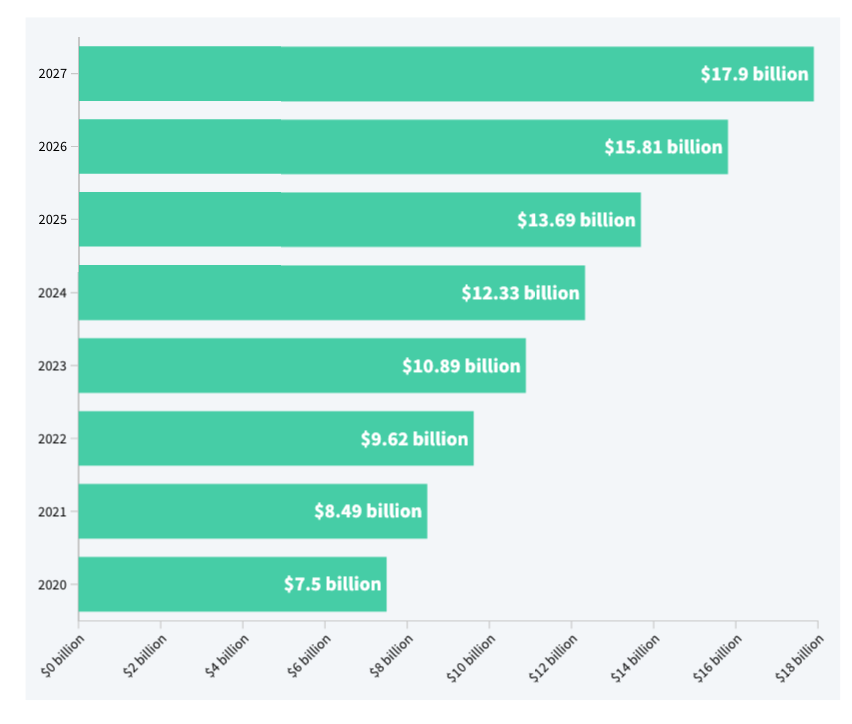
To help you build a successful email marketing strategy, we’ve put together the best email marketing practices that you should consider to improve your engagement rate.
- Keep Your Forms Simple
- Create Multiple Lists and Segments
- Write Compelling Subject Lines and Preheaders
- Be Consistent and Provide Quality
- Automate Your Emails
- Keep Your Call-to-Action Above the Fold
- Keep Your Email 500-650 Pixels Wide
- Include Your Logo
- Send Emails When Your Recipients Are Active
- Leverage AI-Content Generation
- Avoid Using “No-Reply”
- Always Ensure Your Email Lists are Clean
- Evaluate your Performance
1. Keep Your Forms Simple
The main important strategy when asking your leads to fill out a form is to show the real benefit of what they will gain in return for providing their contact information while always keeping in mind the privacy rules and regulations.
Furthermore, a good practice is to display only essential fields (e.g., Name, Email, Phone number, or Company name), while other questions can be collected at a later step.
Multi-step forms, where you divide your forms into several steps during the signup process, make it easier for customers to sign up, rather than having them fill out too much information at once.
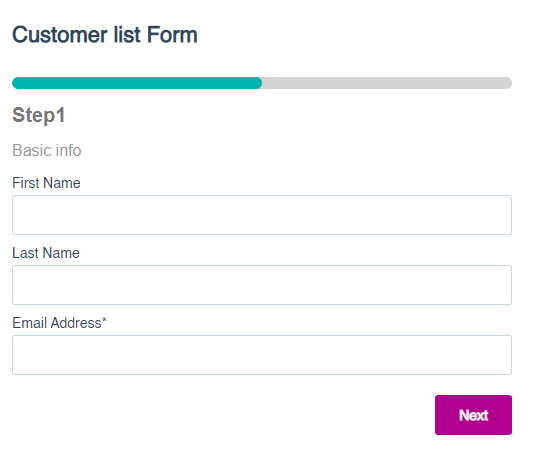
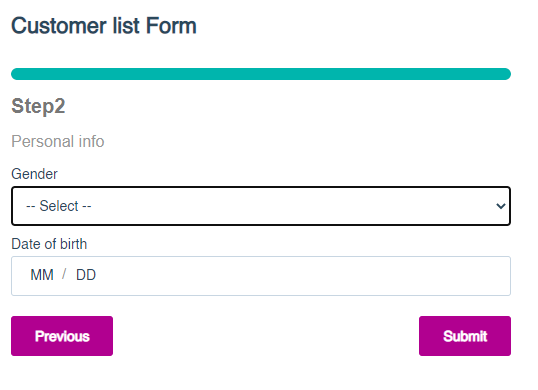
2. Create Multiple Lists and Segments
Before setting up your marketing campaign, you need to build a database of your subscribers. This is done through lists that you can create and assign necessary fields within those lists.
There are different ways to segment; for instance, you can create audiences based on different criteria such as when a particular contact reaches a specific score level, last engagement date, assigned tags, cart abandonment, videos watched, email opens, clicks, SMS engagement, landing page views/clicks, etc.
Also, at the footer of your emails, ask for a preference center that asks which types of emails your customers wish to receive to boost your personalization and reduce the potential for unsubscribes.
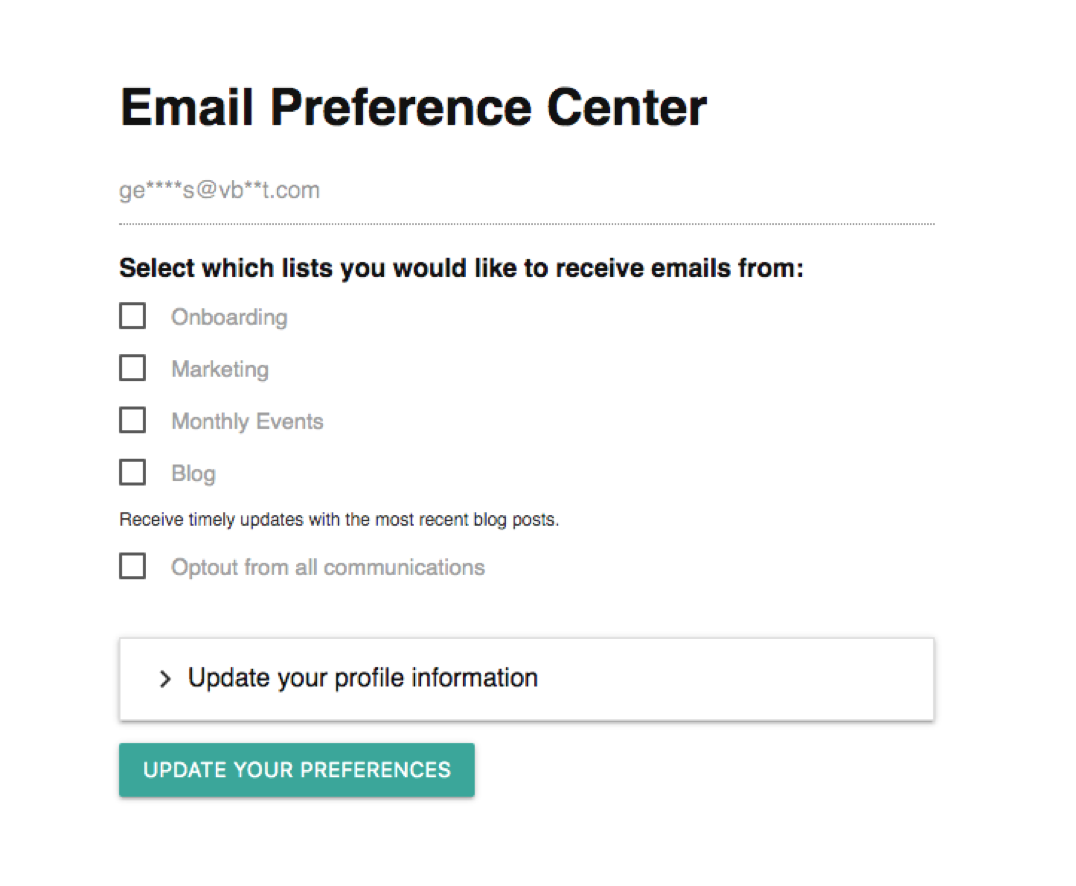
3. Write Compelling Subject Lines and Preheaders
Your subject line and preheaders are the first things the recipient sees when they receive your email. To capture your contacts’ attention, make sure you create a compelling subject line that does not exceed 60 characters.
You can also create a sense of urgency to encourage the user to take action and open the email; for example, you could use Fear of Missing Out (FOMO) sentences like “time is running out, last chance, last day to get your offer…”
As for preheaders, they help boost your email open rates and can have the same impact as your subject line.

To be effective, make sure that your preheader complements what your subject line is mainly about and reflects the content of your email. It’s critical to mention that personalizing your subject line or preheader by addressing your recipients by their name might boost the open rate by an average of 29.3%, according to a study.
4. Be Consistent and Provide Quality
Try to be consistent with the frequency of your email campaigns, as well as the quality of the copy or offers you are sending. Always maintain communication with your customers to keep them engaged with your brand and notify them about recent updates and new content materials.
At the same time, avoid being too noisy when communicating with them, as this would lead them to unsubscribe. Spend time thinking about sending content that your customers find relevant and valuable, and try to find the perfect balance between educational content and promotions.
5. Automate Your Emails
Building automated workflows is one of the most powerful tactics that should never be underestimated. It is a layer that sits on top of your email marketing and lets you effectively engage with your leads through highly targeted content. Not only will you save a lot of time automating welcome and follow-up emails, but you will also nurture your leads throughout the marketing funnel and increase your conversion rate.
It’s important to note that creating workflows is not only limited to emails but extends to other messages such as SMS, web push notifications, and a series of other actions needed to manage your contacts effectively.
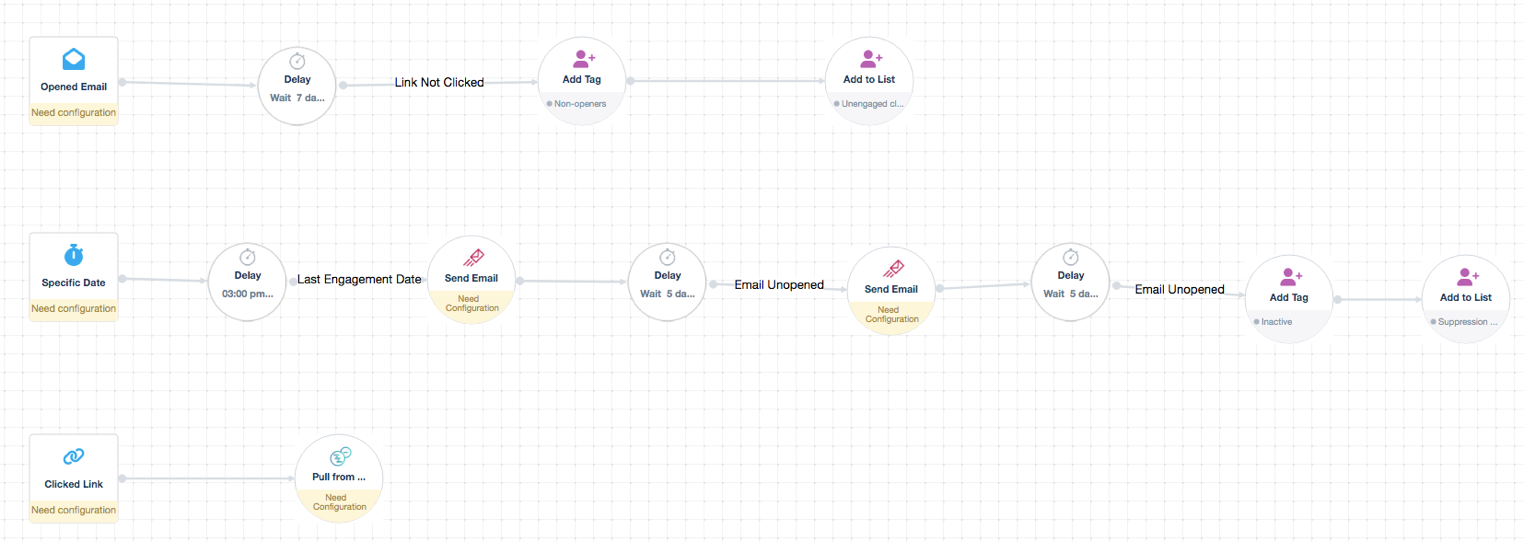
6. Keep Your Call-to-Action Above the Fold
Always position your CTA button above the fold to draw the attention of your recipients quickly and drive them to click through to discover what you have for them.
Although there’s a probability that a major part of your readers might go through the entire content of your email, showing the CTA button early in the process can boost the chance for more clicks, considering that customers generally have a short attention span.
One of the recommended tactics is to A/B test your email by sending two variants of your copy and comparing which version is likely to perform the best.
On another note, keep your email focused on one objective in mind. Is it about reading a newly published article? Asking to book a demo? Clicking to learn more about your offer? The key is not to mix things up and confuse the recipient, as this would cause them to either unsubscribe or bounce off.
7. Keep Your Email 500-650 Pixels Wide
If you exceed the maximum size, you will be telling your viewers to scroll horizontally to read your entire message, which is not practical. This is especially true considering that part of your subscribers might be viewing your emails on their mobile devices, which would hurt your conversion rate.
8. Include Your Logo
This is one of the most minimal requirements for an effective email. Showing your logo inside the email makes your customers easily recall your branding and stimulates trustworthiness, as a legitimate company logo can help decrease the potential of your emails being classified as phishing or spam. This, in turn, leads to higher CTR since recipients are more likely to open and engage with emails they trust.
9. Send Emails When Your Recipients Are Active
Timing is always a critical element in any marketing effort you do. Scheduling your campaigns at the optimal time can ensure a higher open rate which leads to more click-throughs (CTR) and increased conversion.
Although there’s no optimal time, it depends on several factors like the industry you’re operating in, and the time zones of your audience according to the countries they live in… Thus, you may need first to send at different days and times and observe the pattern regularly until you identify the most effective time. Also, use a free email checker to verify the validity of your recipient’s email addresses.
Predictive sending is a good option that allows you to send emails when customers are most likely to open them based on previous engagement data.
10. Leverage AI-Content Generation
There’s no doubt that AI has become applicable across various marketing initiatives such as email marketing, social media, content marketing, SEO, paid ads, etc. This not only saves time for marketers creating generated content but also allows them to personalize all their marketing materials for their target audience, based on their preferences.
Back to emails, the great thing for email marketers is that they can ask the AI-powered platform they are using to generate a copy for their messages, be it emails or SMS. All they have to do is specify the type of email they want to send with a short description, and the content will be generated accordingly.
11. Avoid Using “No-Reply”
Imagine sending out an email from an unknown sender with (noreply@yourcompany.com)… If you put yourself in the recipient’s shoes, you would be hesitant to respond and might even unsubscribe to avoid future emails from this brand. In addition, avoiding such a practice is one of the CAN-SPAM Act rules that you should be aware of.
Now, instead, when the recipient sees, for example, (Michael from Company Name or michael@yourcompany.com), they are more likely to be encouraged to open the email while you grow your relationship and remain compliant with rules and email regulations.
12. Always Ensure Your Email Lists are Clean
There could be a potential scenario where a large part of your contacts across all your lists have not shown any engagement pattern for a long period. Sending them emails each time would harm your IP reputation and increase the chance for your emails to end up in your recipients’ junk folder.
Therefore, use the sunset policy to ensure that your lists are fresh and up-to-date by observing contacts who have not engaged with you for a certain period (3 months, 6 months, 9 months, or one year). Identifying the period’s length depends on the type of your business, frequency of purchase/engagement activity, as well as recency).
This can be done by building a specific workflow for unengaged contacts, where you send them a series of email reminders with 3-5 days’ time delay between each of these emails, incentivizing them to reengage and catch up with what they’ve missed.
If they keep on not engaging, you can remove them from your list. A more recommended practice is to assign them a tag or move them to another list, in order not to lose their data in case of future reference.

13. Evaluate your Performance
When assessing the effectiveness of your email marketing campaigns, it’s crucial to focus on actionable metrics that provide meaningful insights. While several metrics are essential, focusing on specific indicators can help you better understand your campaign’s performance and make necessary improvements.
- Click-Through Rate (CTR): CTR is a key metric that measures how many recipients clicked on links within your email. It indicates the level of engagement with your content and CTAs. A good CTR indicates that your email content and calls-to-action are resonating with your audience. Continuously improve your CTR by optimizing the placement, design, and wording of your links and CTAs.
- Email Read Rate: Email read rate goes beyond the open rate and provides a more accurate picture of how many recipients actually read your email content. It considers whether the email was fully displayed and viewed by the recipient. A strong email read rate indicates that your content is captivating and compelling.
- Conversions: Ultimately, conversions are the most critical metric, as they represent the desired actions taken by your recipients, such as making a purchase, signing up, or downloading content. Track and analyze conversion rates to gauge the success of your campaigns. If your conversion rate is low, investigate factors like the clarity of your CTAs, the relevance of your content, and the effectiveness of your landing pages.
- Spam Reports and Unsubscribes: Keep a close eye on the rate of spam reports and unsubscribes. These metrics signal potential issues with your email content, frequency, or targeting. A high spam report rate can harm your sender’s reputation and email deliverability, so it’s crucial to address any problems promptly. Measure the content and frequency of your emails to reduce spam reports and unsubscribes.
- Open Rate Consideration: While open rate remains a commonly tracked metric, it’s essential to understand its limitations, especially after Apple’s Mail Privacy Policy changes in 2021. The open rate is not as reliable as it once was due to privacy measures that prevent tracking. As a result, while open rate can still offer some insights, it should not be the sole metric you depend on for evaluating email success. Focus on the actionable metrics mentioned above for a more accurate assessment of your campaigns.
Conclusion
Email marketing remains a resilient and evolving channel that consistently proves its effectiveness. As demonstrated by the best practices outlined in this article, staying up-to-date with emerging strategies is essential for email marketers. By implementing these practices, marketers can adapt to changing trends, build stronger relationships with their customers, and ensure continued growth in their email marketing efforts.
Want to discover the best email marketing practices in the age of AI to drive engagement? Sign up to download our email guide in 2025.
Don’t forget to share this article

